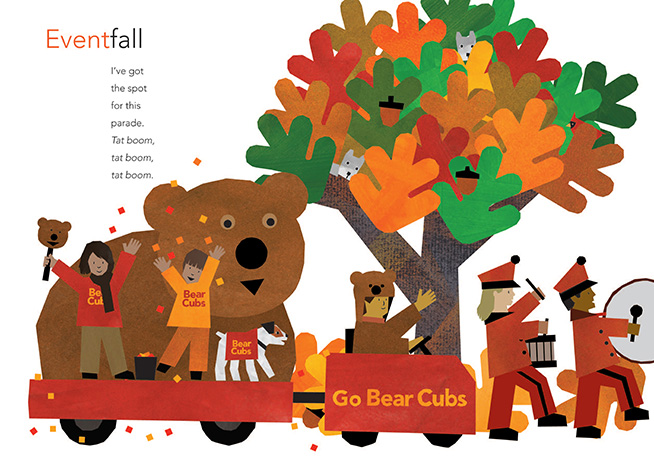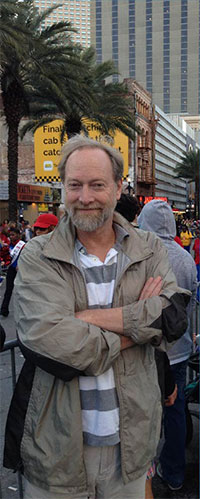Michael Hall is the author/illustrator of The New York Times bestseller, My Heart Is Like a Zoo, as well as the critically acclaimed Perfect Square, It’s an Orange Aardvark, Red: A Crayon’s Story, and Frankencrayon.
Before becoming a children’s author, Michael was an award-winning graphic designer whose work has been widely recognized for its simple and engaging approach.
Michael lives with his wife, Debra Kelley, in Minneapolis, Minnesota.
FREQUENTLY ASKED QUESTIONS
Where did you grow up?
I grew up in Ann Arbor, Michigan, and it seemed significant to me that my name and my state’s name had the same first four letters.
During the school year, I went to a laboratory school on the University of Michigan campus, which was about a half hour walk from my home. It took closer to an hour to walk to the Michigan football stadium where I spent many beautiful Saturday afternoons with my friends.

I was thinking of my hometown when I decided to write a book about autumn called Wonderfall.
If you squint, Michigan can look like a hand. I spent most of my childhood summers in Leland, a small town on the state’s little finger, where my family has a small cottage on Lake Michigan. (Michiganders tend to point to their hands when describing where they live.)
How did you come to write and illustrate picture books?
I wanted to be writer of some sort from an early age and loved creative writing assignments in school. But I am dyslexic, and reading was a chore, so in college, I focused on the sciences where my reading didn’t hamper my studies. It turns out that very few people speed read an organic chemistry textbook.
It’s an Orange Aardvark is a silly story about an imagined aardvark and five carpenter ants. But it’s also a primer on scientific method.
Later, I worked in a number of academic and commercial laboratories and found myself putting off my plan to go to graduate school. It was then that I discovered a thing called graphic design. For me, it was like writing, but with images rather than words. So I spent a year studying design before moving to Minneapolis where my wife, Debra Kelley, and I opened a graphic design shop that focused on creating trademarks and guidelines for their use.
My work as a designer has everything to do with my approach to making picture books.
While working as a graphic designer, I became fascinated with the different ways words and images can interact with each. And that is what inspired me to make picture books. As it turns out many qualities that I looked for in my trademarks — such as economy, timelessness, ambiguity, and humor — are also qualities I strive for in my picture books.
Which comes first, words or pictures?
My Heart Is Like a Zoo and Perfect Square began as visual exercises. I made lots of animals out of hearts and lots of pictures from modified squares before knowing what sort of stories the shapes might want to tell.
Cat Tale began as a word exercise. I thought it would be fun to make a string of leapfrogging sound-alike words. Like this: They flee a steer. They steer a plane. They plane a board. They board a train.

Once I realized that Cat Tale was going to be subtly about reading, I knew I had to include a visual representation of dyslexia.
Red, Frankencrayon, and It’s an Orange Aardvark are examples of stories that began with a metaphor, and I went about writing the words and making the pictures at roughly the same time.

Frankencrayon began as a metaphor for war, as the crayons tried to unscribble a scribble by scribbling on it. It expanded from there.
Is there a mnemonic for the spelling of your name?
My name is an acronym for this short conversation:
“My innards churn happily after eating lemons.”
“Have another, lemon lover.”
